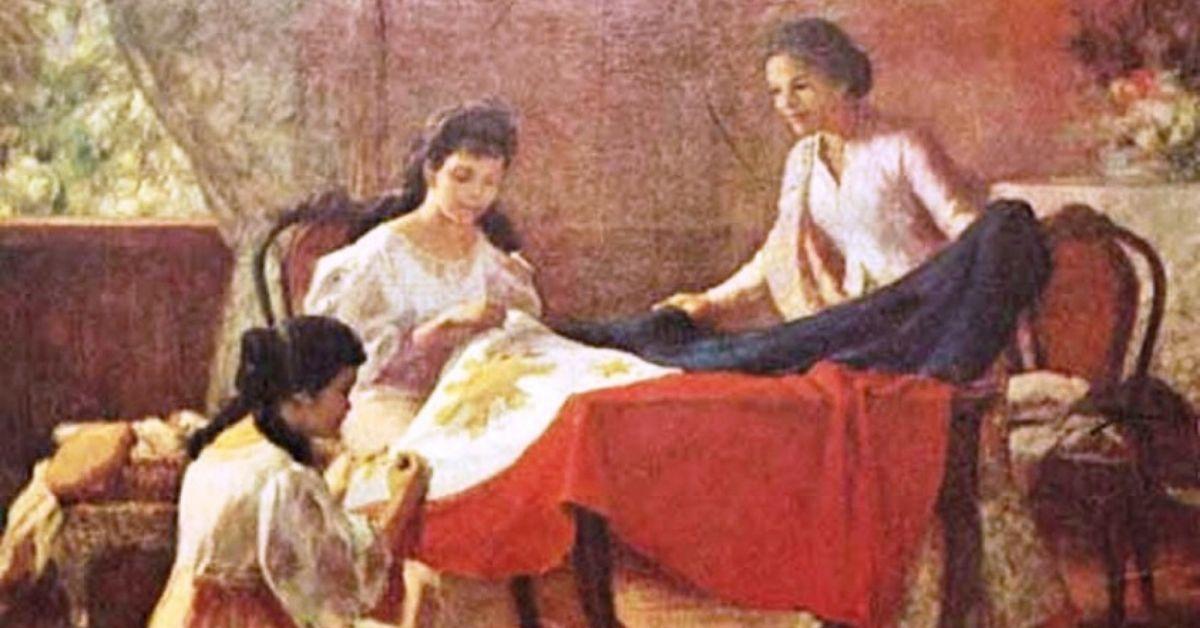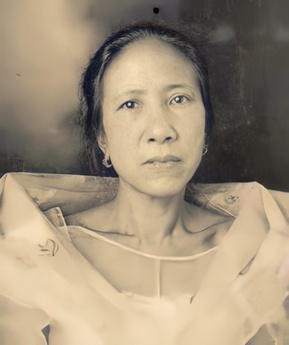TRUE OR FALSE
Women during the pre-colonial period had the same rights, privileges, and opportunities as men.
TRUE.
According to Philippine historians, women during the precolonial period had the right to divorce and had autonomy for their bodies.
The _________________ were the religious leaders, community doctors and healers in some pre-colonial Philippine societies.
One of the most famous paintings of Juan Luna:

Spolarium (1884)
In 1884, this painting won a first-class medal in the Madrid Exposition of Fine Arts.
________________ is known as the "Ama ng Katipunan."
Andres Bonifacio
TRUE OR FALSE
Political cartoons/editorial cartoons are considered secondary source.
FALSE.
Political cartoons/editorial cartoons are considered primary sources for they reflect the artistic perspective on the issues during a certain period.
The head of a Visayan Community is called ________.
A. Pinuno
B. Datu
C. Rajah
B. The had of a Visayan community was a datu, what the Spaniards called principal, chief, or "a lordof vassals," and kadatoan were those datus regarded autonomous.
Who is painted this?

Fernando Amorsolo
•Fernando Amorsolo was born on May 30, 1892 in Calle Herran in Paco, Manila to Pedro Amorsolo and Bonifacia Cueto.
•Amorsolo spend most of his childhood in the small-town setting of Daet in Camarines Norte where his love for the simple rural life would become the foundation for his artistic output for which he is most well-known.
•in 1914, he finally earned his degree, with honors, as a member of the first graduating class of the University of the Philippines School of Fine Arts.
TRUE OR FALSE
A Katipunan member visited Rizal during his exile in Dapitan.
TRUE
Dr. Pio Valenzuela visited Rizal in Dapitan to consult about the start of the Katipunan, an armed revolution against Spain.
Sino ang nagbigay ng kahulugan sa kasaysayan bilang "Ang kasaysayan ay mga salaysay ng mga pangyayaring may saysay para sa grupo ng taong sinasalaysayan nito."
A. Xiao Chua
B. Zeus Salazar
C. Ambeth Ocampo
D. Teodoro Agoncillo
When Jose Rizal was in London, he annotated a document written by a Spanish official in the Philippines during the early colonization of the Philippines.
What is the name of the document?
A. Philippines: A Century Hence
B. The Philippine Islands, 1493-1898
C. Sucesos de Las Islas Filipinas
D. Philippine Chronicles of Fray San Antonio
C. Sucesos de Las Islas Filipinas
This document was written by Antonio de Morga and was published in 1609. It contains his observations on the culture and society of the Filipinos before the colonization.
Jose Rizal annotated this document which means he put footnotes and corrected some assumptions and bias perspective of the Spaniards in the Philippines.
_______ were the women forced by the Japanese Imperial Army to sexual slavery.
Comfort Women
TRUE OR FALSE
Paintings are considered primary sources.
TRUE.
A primary source is "first-hand" information, sources as close as possible to the origin of the information or idea under study.
Thus, a painting is a primary source because it reflects the themes, styles, and techniques of paintings in a specific period of time.
Si Melchora Aquino ay kilala bilang "____ ng Katipunan."

Ang _____________ at isang metodo ng pagkilala sa kasaysayan at kalinangang Pilipino na nakabatay sa “panloob na pagkakaugnay-uganay at pag-uugnay ng mga katangian, halagahin (values), kaalaman, karunungan, hangarin, kaugalian, pag-aasal at karanasan ng iisang kabuuang pangkalinangan—kabuuang nababalot sa, at ipinapahayag sa pamamagitan ng iisang wika; ibig sabihin sa loob ng isang nagsasariling talastasan / diskursong pangkalinangan o pangkabihasnan.
A. PANTAYONG PANANAW
B. PANGKAMING PANANAW
C. PILIPINONG PANANAW
Precolonial Visayans hunted with dogs and nets.
The so-called dogs were called:
A. Asu
B. Alaga
C. Ayam
C. Ayam
The dogs were called Ayam, the hunters mangangayam, ad those who could predict the dog would be good hunter by examining the teats at birth were inayam.
TRUE OR FALSE
In some communities during the pre-colonial Philippines, virginity among women was not considered important.
Ang The Philippine Chronicles of Fray San Antonio ay pagsasalin ni D. Pedro Picornell ng unang libro ng Cronicas De La Provincia de San Gregorio Magno ni Fray Juan Francisco de San Antonio. Ito naman ang naging pananaw ni San Antonio sa sekswalidad ng mga kababaihan:
Virginity was considered dishonorable and they had men whose job was to deflower their women. No woman, married or single, valued her honor and virtue, all of them had a lover of another, but even if this was considered so honorable by them, promiscuity was considered dishonorable. Today, these women are modest in their behavior, but are easy if there is insistence, such that it is evident that the fires of their origins still smoulder. At birth, the midwives themselves would habilitate the males, and even females, for the carnal act by cutting I do not know what of their instruments. Today, the midwives no longer do this, but this is still being done on the boys and it is known other strange ways to increase the sensuality and duration of the acts, which today have been completely done away with, but the sodomitic plague of the Japanese and Chinese has stuck them and I have seen some burn in my time for this. Finally, they all never think of being chaste such that among holier ones, all they think is marriage.
Juan Luna was also a member of _____________________ the that tried to convince Emilio Aguinaldo during his exile return to the Philippines and take part in the armed rebellion against the Spaniards.
A. Hongkong Revolutionary Committee (Hongkong Junta)
B. Philippine Revolutionary Army
C. Katipunan
D. Propaganda Movement
DOUBLE TROUBLE!
Correct= 40 points
Wrong= -20 points
Who is this person? 
Gregoria De Jesus
It studies aspects of the past that deal with organization and power.
A. ECONOMIC HISTORY
B. POLITICAL HISTORY
C. WORLD HISTORY
D. SOCIAL HISTORY
B. POLITICAL HISTORY
Theories suggest that the growth of the population of the Philippines and Southeast Asia is a result of a group of people from Asia known as the __________.
A. Polynesian
B. Austronesian
C. Indones
D. Negrito
B. AUSTRONESIAN
DOUBLE TROUBLE!
(Kapag nakuha ng tama, magiging double ang puntos (50 points), kapag mali naman, ang grupo ang magkakaroon ng -25 points.)
________ is A WOMAN member in the group Sakdal, a Philippine peasant organisation founded in 1930 by Benigno Ramos. The organisation protested against the mainstream nationalist movement led by Manuel Quezon, because the Sakdalistas considered that it was not seeking genuine independence from the American colonialists and that it was dominated by landlord interests.
A. Salud Algabre
B. Nieves Fernandez
C. Maria Rosa Henson
D.Pura Villanueva Kalaw
A. SALUD ALGABRE
Born in 1894, Salud Algabre was a member of the Sakdal, a Philippine peasant organisation founded in 1930 by Benigno Ramos.
The organisation protested against the mainstream nationalist movement led by Manuel Quezon, because the Sakdalistas considered that it was not seeking genuine independence from the American colonialists and that it was dominated by landlord interests.
Salud figured prominently in an uprising on 2 May 1935 in the town of Cabuyao, Laguna, when she led a group of Sakdalistas who blocked the railroad, cut telegraph lines and patrolled the national highway.
On January 23, 1969, during the inauguration of the Manila Hilton's Art Center, Fernando Amorsolo was called _____________________.
A. Father of Filipino Modern Art
B. Grand Old Man of Philippine Art
C. Modern Father of Filipino Paintings
TRUE OR FALSE
Women during the Philippine Revolution played an integral part.
TRUE.
They played an integral part in sustaining the revolution. Yet their participation has scarcely been recognized in most historical accounts of the revolutionary era. As a generalization, it can be said that the contributions of women to the revolution have been neglected in major historical studies of the period.
The most well-known historians of the revolution, such as Agoncillo (1956), Sturtevant (1976), Tleto (1979) and Schumacher(1991), rarely mentioned women in their seminal works.
FROM:
Behind the Lines: Women in the History and Literature of the Philippine Revolution of Christine Doran
Ano ang pagkakaiba ng PRIMARY at SECONDARY SOURCES?
Ang Primary Sources ay galing sa isang eye-witness ng isang pangyayaring pinaguusapan.
Ang Secondary Sources may interpretasyon at pagkukumpara ng iba't ibang mga dokumento at testimonya upang makabuo ng isang salaysay. https://www.youtube.com/watch?v=Cvmin4VK3m4
